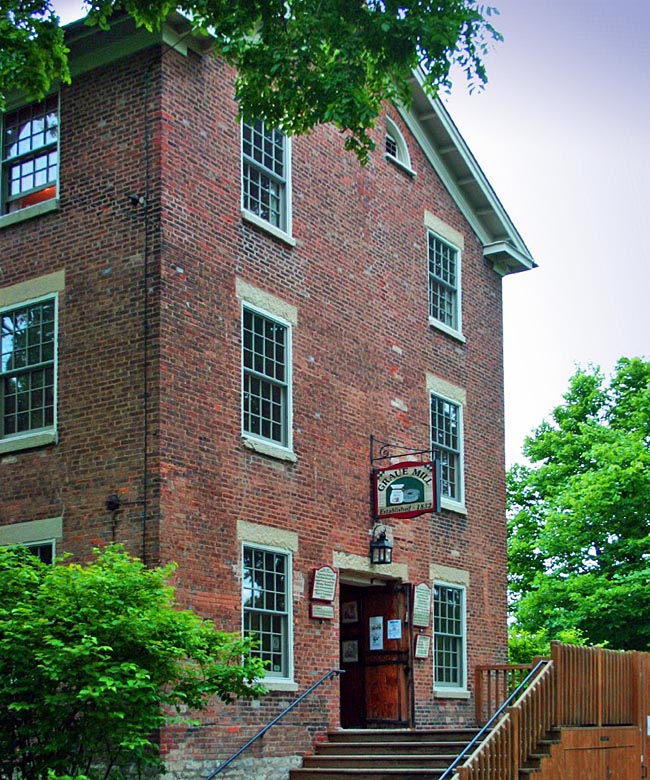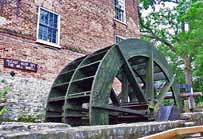|
Scenic USA - Illinois Graue Mill and Museum |

| Photos by Kevin Kreiman |
Less than 15 miles from Lake Michigan, German immigrant Frederick Graue and his family settled in the farming village of Fullersburg during the late 1840s. Among many
new arrivals to Illinois, Graue and his brother-in-law built a water-powered sawmill in the area. Striking out on his own a few years later, Graue decided to harness the power from Salt Creek for a grist mill. Using clay material found locally, he and family fired bricks on site and began to raise a four story mill. During the summer of 1852 the building was complete and Graue started up the machinery for the very first time. His mill added an important business near the outskirts of the newly founded City of Chicago. Graue and his family continued to operate the grist mill for 60 years, grinding wheat, corn and other grains produced by local farmers of DuPage County.
Several years after the mill had closed it was added to the properties of the Dupage County Forest Preserve. Fullersburg, now known as Oak Brook,  saw its residents come together and repair the mill. Opening as a museum in 1951, the old mill now houses a collection of artifacts from the 1850s to the 1890s. Volunteers dress in period clothing to demonstrate the arts of spinning, weaving, churning butter, milling, and other activities common in the lives of early Fullersburg residents.
saw its residents come together and repair the mill. Opening as a museum in 1951, the old mill now houses a collection of artifacts from the 1850s to the 1890s. Volunteers dress in period clothing to demonstrate the arts of spinning, weaving, churning butter, milling, and other activities common in the lives of early Fullersburg residents.
Opposed to American slavery, it was no surprise to find the cellar of Graue Mill to be a regular stop on the Underground Railroad. It was reported that President Lincoln visited Graue Mill on a trip from Chicago to Springfield. Lincoln's visit adds more credence to stories of runaway slaves at the mill. The mill is listed in the National Register of Historic Places, and is also the only gristmill, on a national level, to be recognized as an engineering landmark by the American Society of Mechanical Engineers.
Area Map

|
More Area Attractions |
|
Copyright © 2020 Benjamin Prepelka
All Rights Reserved
